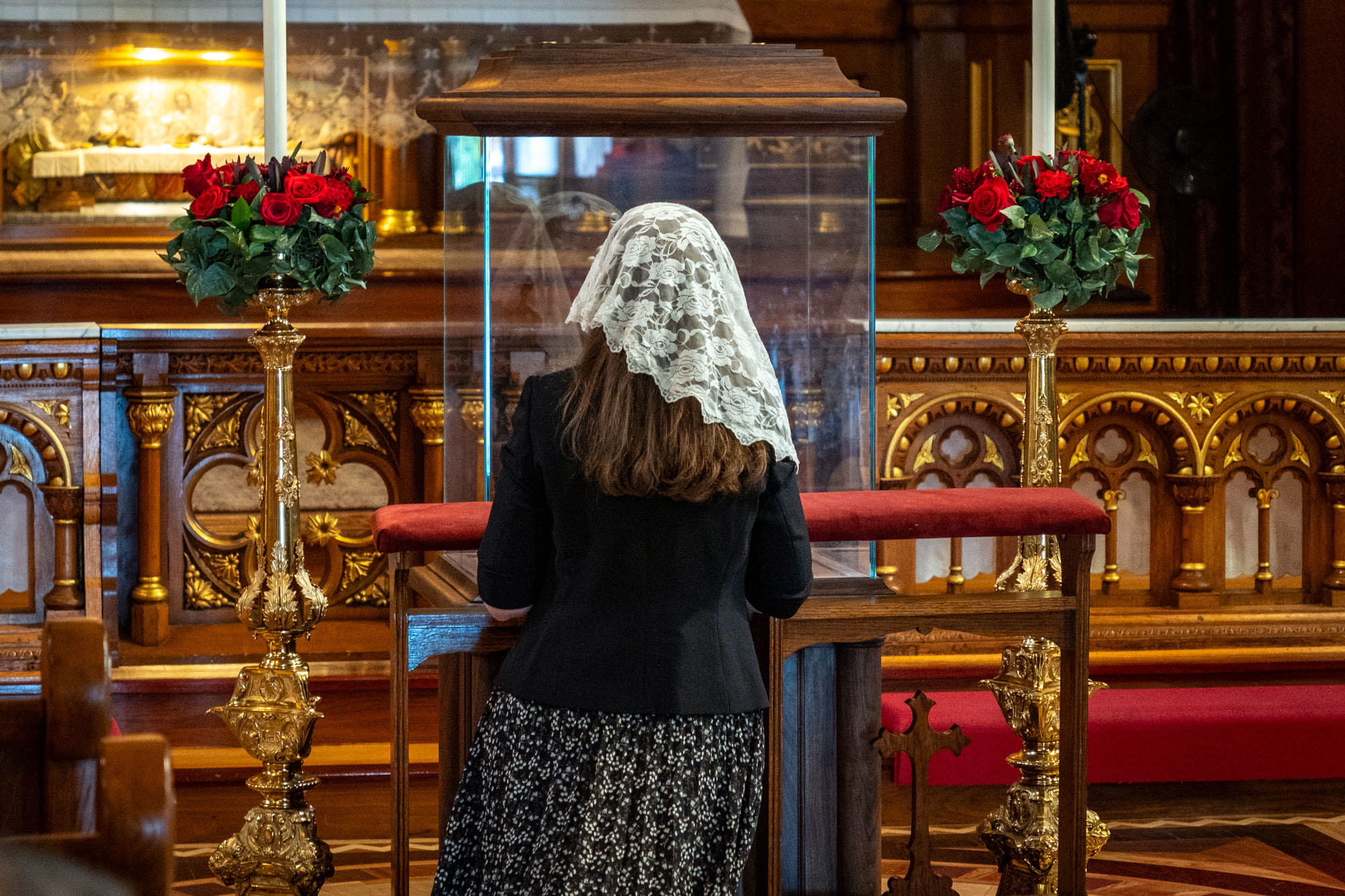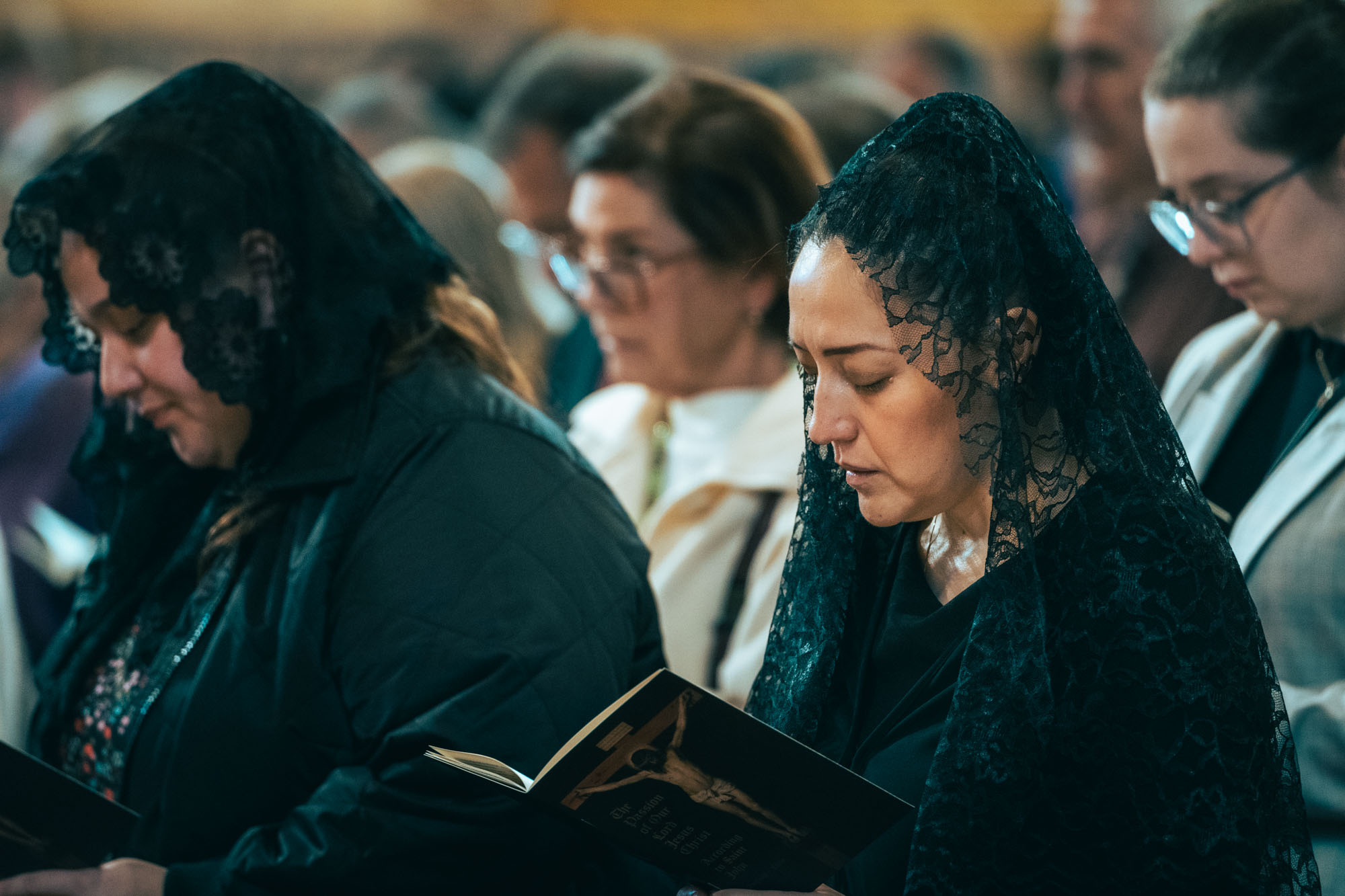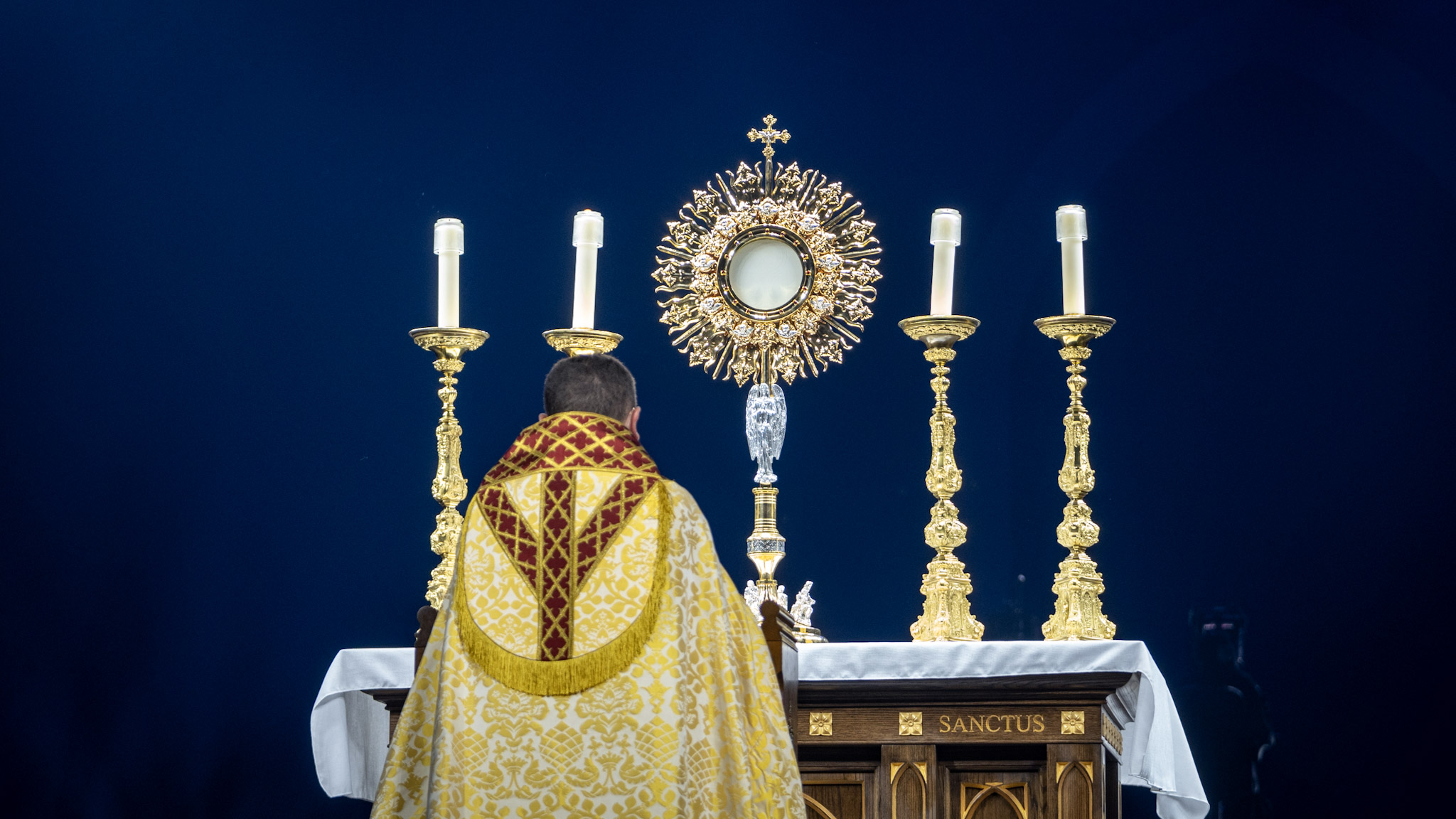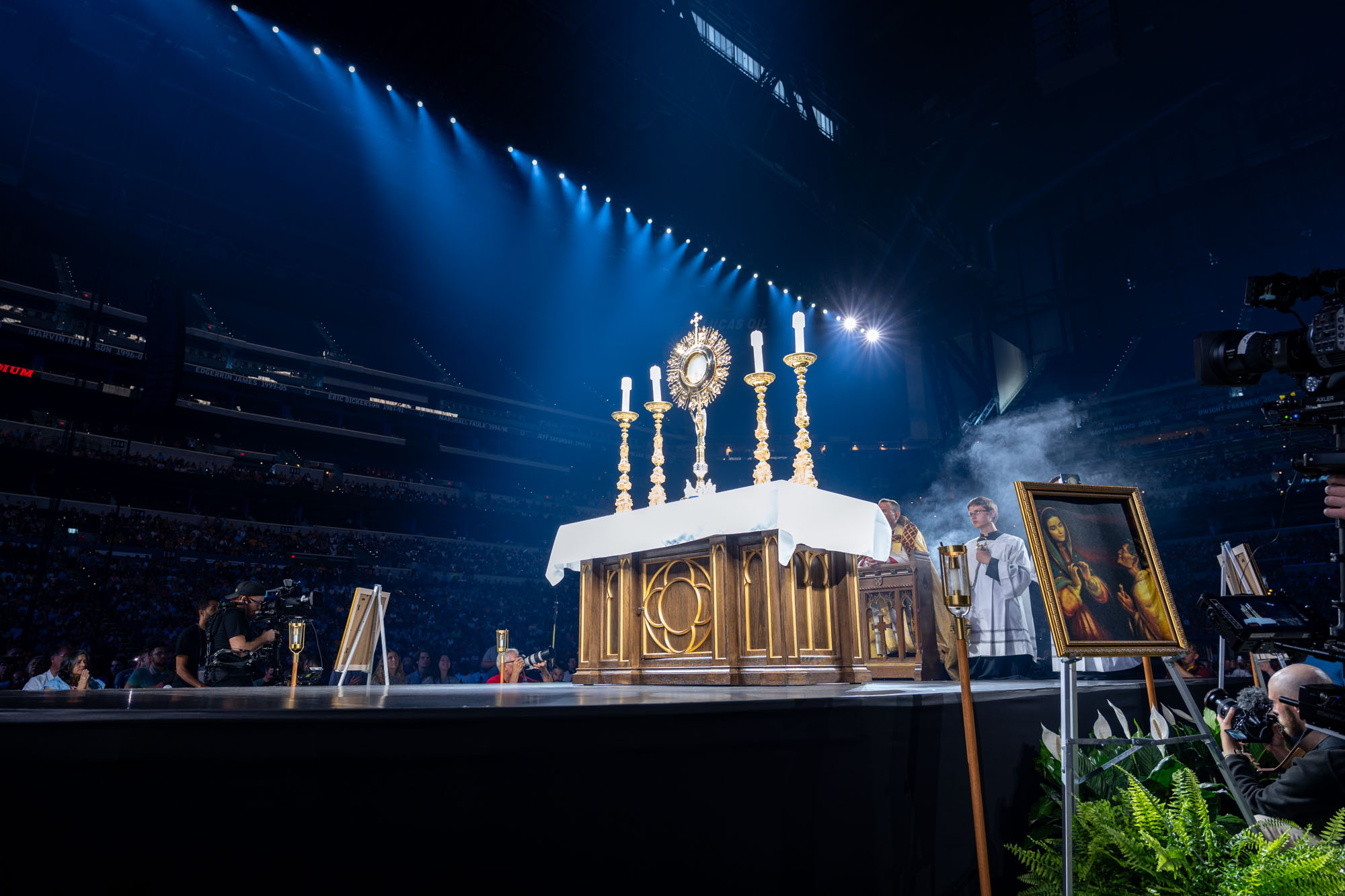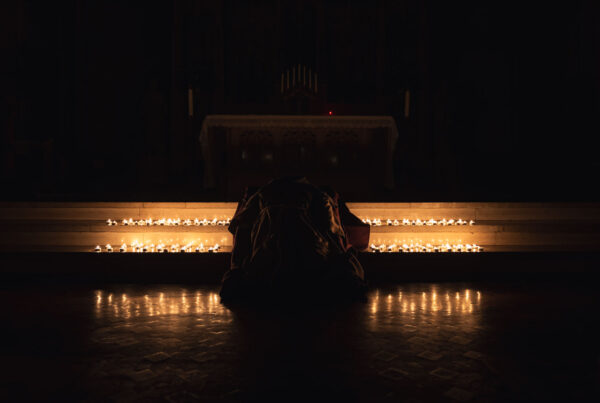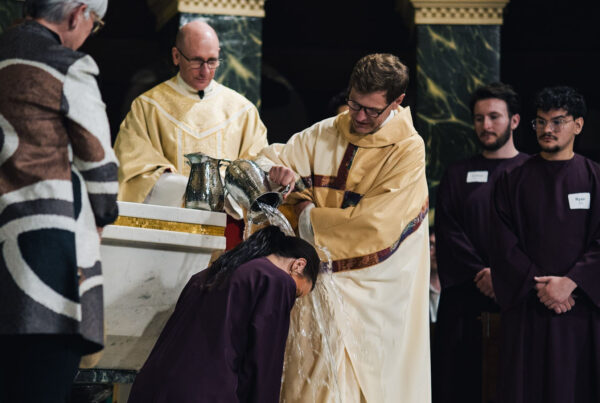The Tradition and Symbolism of Catholic Veiling
The practice of Catholic veiling, often referred to as “veiling for Mass,” is a beautiful and deeply symbolic tradition within the Catholic Church. Rooted in Scripture, tradition, and theological significance, veiling continues to be embraced by many women as a profound expression of faith, humility, and reverence for the sacred. This article explores the history, meaning, and contemporary practice of Catholic veiling, including the significance of veil colors during Mass.
Historical Context of Catholic Veiling
The tradition of women covering their heads in Christian worship dates back to the early Church and has its foundation in Scripture. In 1 Corinthians 11:2-16,
2 I praise you because you remember me in everything and maintain the traditions just as I passed them on to you. 3 But I want you to know that Christ is the head of every man, and the man is the head of a woman, and God is the head of Christ. 4 Any man who prays or prophesies with his head covered disgraces his head. 5 But any woman who prays or prophesies with her head uncovered disgraces her head, for it is one and the same thing as having a shaved head. 6 For if a woman will not cover her head, she should cut off her hair. But if it is disgraceful for a woman to have her hair cut off or her head shaved, she should cover her head. 7 For a man should not have his head covered, since he is the image and glory of God. But the woman is the glory of the man. 8 For man did not come from woman, but woman from man. 9 Neither was man created for the sake of woman, but woman for man. 10 For this reason a woman should have a symbol of authority on her head, because of the angels. 11 In any case, in the Lord woman is not independent of man, nor is man independent of woman. 12 For just as woman came from man, so man comes through woman. But all things come from God. 13 Judge for yourselves: Is it proper for a woman to pray to God with her head uncovered? 14 Does not nature itself teach you that if a man has long hair, it is a disgrace for him, 15 but if a woman has long hair, it is her glory? For her hair is given to her for a covering. 16 If anyone intends to quarrel about this, we have no other practice, nor do the churches of God.
St. Paul instructs women to cover their heads during prayer and prophesying, explaining that the veil signifies authority and respect before God. This practice was common among early Christians and was widely observed for centuries.
In addition to its biblical roots, veiling has strong connections to cultural norms of modesty and reverence. In many societies, a covered head was a sign of humility and respect, both in religious and secular contexts. For Catholic women, veiling during Mass became a universal custom that emphasized the sacredness of the liturgy and the distinct roles of men and women within the Church.
The practice of veiling was codified in the 1917 Code of Canon Law, which required women to cover their heads in church. However, this specific requirement was omitted in the 1983 revision of the Code, leading to a decline in the practice. Despite this, veiling has never been prohibited, and in recent years, it has experienced a resurgence among Catholic women who are drawn to its spiritual and symbolic significance.
Theological Significance of Veiling
Veiling carries profound theological meaning. It serves as a tangible reminder of the sacred realities present during the Mass, particularly the Eucharist, which Catholics believe is the true Body, Blood, Soul, and Divinity of Jesus Christ. The veil signifies a woman’s acknowledgment of the real presence of Christ in the Eucharist and her desire to humble herself before God.
The veil also symbolizes the Church, the Bride of Christ. Just as the Church is adorned as a bride for her divine Bridegroom, women who veil imitate this imagery, expressing their spiritual union with Christ and their role within the mystical Body of Christ. This symbolism reflects the feminine vocation to nurture, protect, and bear life physically and spiritually.
Furthermore, the act of veiling fosters an interior disposition of prayer and contemplation. By donning a veil, a woman sets herself apart from the world’s distractions, focusing her attention on the sacred mysteries being celebrated in the liturgy. For many, it becomes a physical expression of their commitment to live a life centered on Christ.
Veiling in Modern Times
While veiling is no longer mandated, it remains a cherished tradition for many Catholic women. Those who veil often describe it as a deeply personal and transformative practice. Some women begin veiling after feeling a spiritual calling, while others are inspired by the beauty and symbolism of the tradition.
The choice to veil is highly individual, and women who embrace this practice come from diverse backgrounds and levels of faith. For some, veiling is a way to reconnect with the Church’s rich heritage and liturgical customs. For others, it is an act of obedience to St. Paul’s exhortation in Scripture or a means of fostering greater devotion during Mass.
Colors and Their Meaning in Catholic Veiling
One of the unique aspects of Catholic veiling is the use of different veil colors to signify specific meanings or to align with the liturgical calendar. While there are no strict rules governing the color of veils, certain traditions and conventions have emerged over time:
- White or Ivory: These colors are often associated with purity and are commonly worn by single women, young girls, and brides. White or ivory veils symbolize innocence, light, and a heart dedicated to God. Many women choose these colors for major liturgical celebrations such as Easter or Christmas.
- Black: Black veils are traditionally worn by married women, widows, or women who wish to express a sense of humility and solemnity. Black signifies modesty, dignity, and a recognition of the sacred. Some women prefer to wear black veils year-round, while others reserve them for penitential seasons such as Lent.
- Mantilla Colors Aligned with Liturgical Seasons: Some women choose veil colors that correspond to the liturgical season or specific feast days:
- Purple or Violet: These colors are associated with penance, preparation, and spiritual reflection. They are often worn during Advent and Lent, aligning with the themes of these seasons.
- Red: Red symbolizes the Holy Spirit, martyrdom, and the passion of Christ. Women might wear red veils for Pentecost, feasts of martyrs, or Good Friday.
- Green: Green represents hope, growth, and new life. This color corresponds to Ordinary Time, the liturgical season focused on the growth of the Church and the Christian soul.
- Gold or White: These colors signify joy, celebration, and the glory of God. They are often worn during the Christmas and Easter seasons or on major solemnities such as the Assumption or the Feast of Christ the King.
- Blue: Blue is traditionally associated with the Blessed Virgin Mary and is often worn on Marian feast days. It symbolizes purity, fidelity, and heavenly grace, making it a popular choice for women who wish to honor Mary through their veiling.
Would you like to stay close to the Holy Eucharist all day long?
Now you can, I have 8 Holy Eucharist Wallpapers for you, so you can stay connected with Jesus Christ anywhere you are!
Practical Considerations for Veiling
For those new to veiling, choosing a veil can feel daunting, but it is a deeply personal decision. Veils come in various styles, sizes, and materials, ranging from simple lace mantillas to more elaborate designs. Women are encouraged to select a veil that resonates with their personal taste and spiritual intentions.
The act of veiling does not require perfection or rigidity. Whether a woman wears her veil every Sunday or only on special occasions, the most important aspect is the disposition of her heart. Veiling is not about drawing attention to oneself but about fostering an attitude of humility and reverence.
Addressing Common Misconceptions
While veiling is a meaningful practice for many, it is not without its misconceptions. Some view veiling as an outdated or oppressive custom, but this perspective often overlooks its rich theological and spiritual significance. Veiling is a voluntary act of devotion, not a requirement or imposition. Women who veil do so out of love for Christ and a desire to honor Him in the liturgy.
Another misconception is that veiling creates division among women in the Church. On the contrary, veiling can be a source of unity, as it connects women to a shared heritage of faith and devotion. The practice transcends cultural and generational boundaries, allowing women to participate in a tradition that has been cherished for centuries.
The Spiritual Fruits of Veiling
For many women, veiling yields abundant spiritual fruits. It deepens their sense of reverence for the Eucharist, fosters a greater awareness of God’s presence, and strengthens their commitment to prayer. Veiling often becomes a source of spiritual renewal, inspiring women to grow in holiness and live more intentionally as disciples of Christ.
The practice also invites others to reflect on the sacredness of the Mass. A veiled woman can serve as a silent witness to the beauty and mystery of the liturgy, prompting others to consider their own attitudes and behaviors in the presence of God.
Summary
Catholic veiling is a tradition rich in history, symbolism, and spiritual significance. Though no longer mandated, it continues to inspire and uplift women who choose to embrace it as a personal act of devotion. By veiling during Mass, women express their reverence for the sacred, their humility before God, and their desire to live as members of the mystical Body of Christ.
The use of veil colors to reflect liturgical seasons or personal intentions adds depth and beauty to the practice, making it a meaningful expression of faith. Whether worn daily, weekly, or on special occasions, the Catholic veil serves as a reminder of the divine mysteries encountered in the Mass and the transformative power of God’s grace in the lives of His people.
